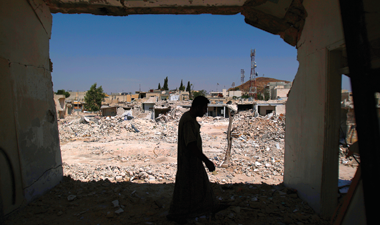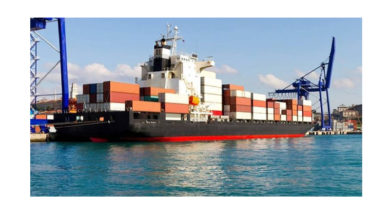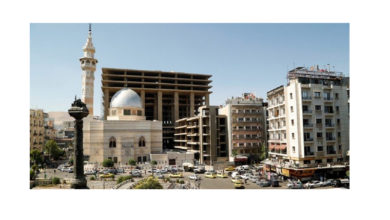Syrian Printers Struggle To Survive

Twenty months of revolution and questions are arising about the survivability of printing presses in Syria. Poor economy and the wave of economic sanctions imposed by the UN have had its toll on the country. In light of this situation ME Printer delved into the printing and packaging market in the region to know its status quo.
Contrary to our expectations, we found out that the printing and packaging market had stood its ground and has managed to survive unfavourable conditions. Hassan Tarabichi, production manager at Tarabichi printing and packaging, which is active since 1993, explained the impact of the current situation on the printing presses in Syria.
 Commercial Printers Face the Heat
Commercial Printers Face the Heat
Tarabichi said that printing presses near the conflict areas were the most affected ones. He observed, “Small to medium sized print houses were forced to close down due to their inability to continue operations. While larger print houses faced the challenges and they still continue with their normal course of work.”
According to Tarabichi, packaging presses were the least affected due to their close association with industries like food and pharmaceuticals that are essential to the survival of the people. He added that small to medium commercial printers suffered great loss as most of them relied on the advertising and publishing market, which collapsed under the weight of the repercussions.
Absence of security and the erosion of the Syrian economy have exacerbated the condition of the packaging and printing market. Difficulties in transporting materials, energy crisis, skyrocketing prices of consumables and its non-availability are some of the hurdles that the printers have to go through.
Raafat Ashram, owner of Andalus press which has been functioning since 1958 in Homs believes that there was much impact on the local printing presses due to the uprising. He explained that the continuous rise in consumable prices and difficulty in obtaining paper often disrupted the production process in many presses. “Printing orders shrunk considerably over the past few months, especially in commercial printing and advertising. But the demand for packaging products in sectors like food and pharmaceuticals are still there. About 80% of the printing operations were affected due to the crisis.” Raafat confirmed that lack of security and liquidity are pressurizing the printing scenario amid dwindling job opportunities.
Effect on Neighbouring Countries
The stagnant conditions in Syria have also overshadowed the printing market in Jordan. According to Arabs Today newspaper, Jordanian market recorded a fall in the rate of publications imported; particularly luxury products like wedding cards that were designed and printed in Syria and later personalized in Jordan.
On the contrary, the situation in Syria has benefitted printers in Iraq. With trade and deals restricted between the countries, Iraqi printers had to make up for the shortfall and as a result were able to double their turnover.
Ahmed Al Esami, owner of a printing press in Iraq believes that the situation in Syria re-energized the printing market in Iraq. He considered it as an opportunity for Iraqi presses to recover their market share of printing, which was earlier being routed to neighbouring countries. According to him, unstable conditions in Syria have led presses in Iraq to reconsider the possibilities of the Iraqi printing market.




